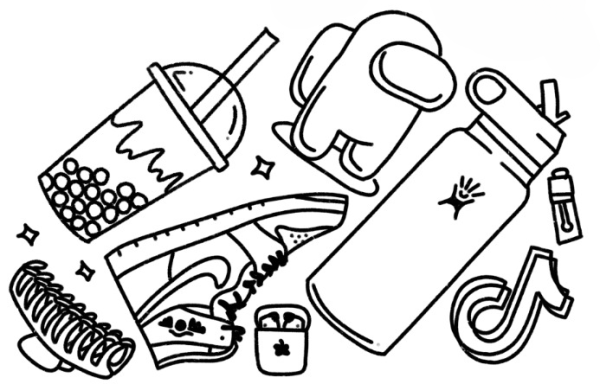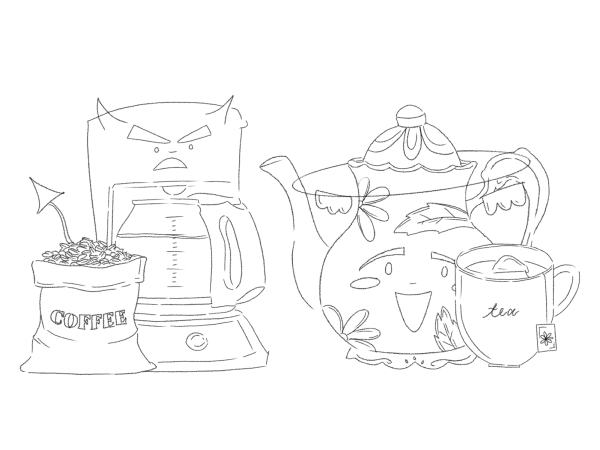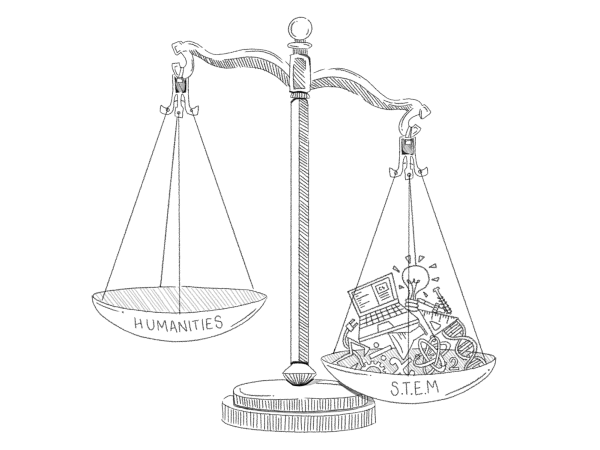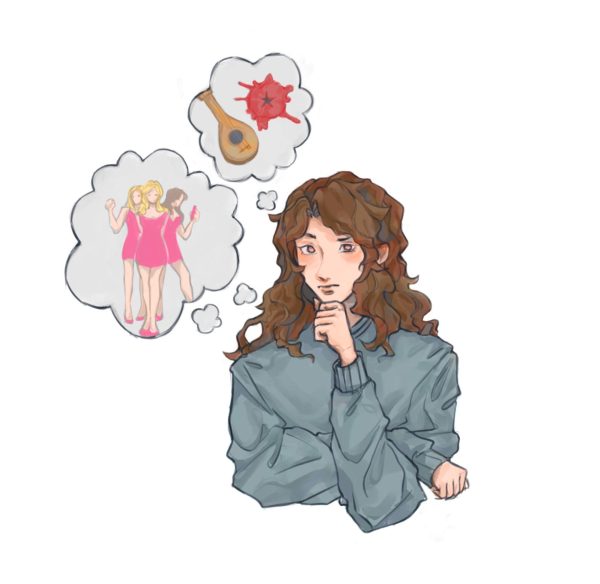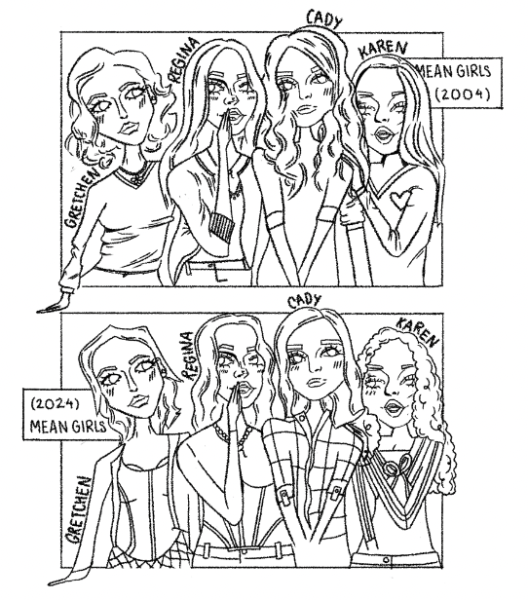Strict Dress Codes or Uniforms Will Not Benefit Menlo
Despite Menlo not having a strict dress code or uniform, some complaints have arisen from faculty members about students’ clothing choices. Staff illustration: Sutton Inouye.
December 15, 2021
Menlo Upper School has been without a formal dress code or uniforms for at least 15 years, choosing instead to set a few guidelines in the Menlo Student and Parent Handbook and trust students to follow them. However, complaints have arisen from faculty members about the clothing choices of some students, and students have complained about being shamed and embarrassed by teachers. The Coat of Arms Print Issue 48.3 unpacks some of these complaints from both students and teachers. As tensions continue to rise, students have begun to discuss whether or not uniforms would be the best solution.
At my old middle and high school, based in Memphis, TN, we wore uniforms each Friday of the week. They consisted of a button-down shirt, a khaki skirt for girls and khaki pants for boys and a blazer. Dress shoes were also required with the uniforms: saddle oxfords for girls and loafers for boys. The uniforms were impractical and uncomfortable in Memphis weather, with students sweating profusely in their blazers during the summer months and girls freezing in their skirts during the winter.
Strict dress codes were in place for the rest of the days. Girls were not allowed to wear blue jeans, the straps of any tank top had to be at least 1½ inches wide and any dress or skirt had to be no more than the width of a credit card above the knee. Boys had to wear a belt and have their shirts tucked in at all times. The heels of any shoes could not be above 2 inches, the bangs of hair could not be below your eyebrows, you could not dye your hair any “unnatural” color, and college sweatshirts were a senior privilege. Any design on shirts, jackets and sweatshirts could not be larger than a credit card. Any infraction of the dress code resulted in detention, and the student would have to change into whatever old clothes were in the lost and found bin.
As I transitioned into high school and started to develop a sense of style, these strict dress codes became oppressive, uncomfortable and expensive. Since the clothes I had to wear to school were too conservative and out-of-fashion to be worn anywhere else, I insisted on buying more clothes to wear to parties, vacations and outings with friends. The dress code limited the creative expression of students, and no student could embrace their unique, individual identity.
Teachers argue that they regulate students’ clothing to validate concerns they have had about the way some students dress. However, creating and strictly enforcing new rules rarely generates a positive response from students. There were instances at my old school where teachers would make a point to give students detention in front of other students as an “example”. My friend was once given detention in front of the entire cafeteria because her skirt was an inch shorter than required, and the teacher did it cheerfully and dramatically, making her disgust at the “immodesty” of my friend clear.
It is a mistake to believe that banning certain articles of clothing will spark more conversations about dress codes and lead to solutions. It is important to preserve student identity and prevent an oppressive and restrictive culture, and if uniforms and dress codes are introduced at Menlo, the values Menlo has now will be in danger. There are ways to encourage appropriate clothing without strict rules and standards for students to follow.




